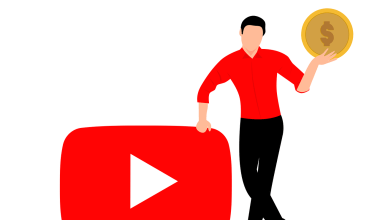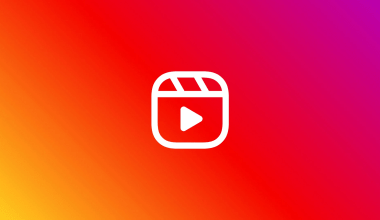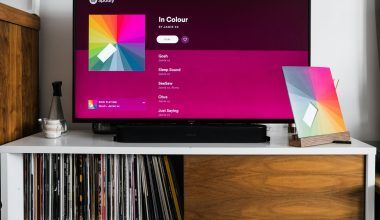Creating engaging and discoverable YouTube content is essential for musicians looking to grow their audience. One crucial aspect of YouTube optimization is using tags in YouTube music videos. Tags help categorize your videos, making it easier for viewers to find your content. In this guide, we’ll explore the importance of tags, how to use them effectively, and best practices for musicians.
Using tags in YouTube music videos is vital for several reasons:
- Enhanced Discoverability: Tags help YouTube’s algorithm understand the content of your video, making it easier to suggest your videos to users interested in similar content.
- Improved Search Rankings: Properly optimized tags can improve your video’s search rankings, increasing the likelihood of your video appearing in search results.
- Targeted Audience: Tags allow you to target specific keywords and phrases that your potential audience is likely to search for.
- Related Content: YouTube uses tags to link your video with other similar videos, which can drive more traffic to your channel through suggested videos.
Tags act like keywords that give YouTube a clear idea of what your video is about. When someone searches for music videos similar to yours, YouTube considers these tags to decide whether your video should appear in the search results or in the recommended videos section. This can significantly boost your visibility on the platform.
When using tags in YouTube music videos, it’s essential to choose the right tags that are relevant to your content. Here are some tips to help you select the best tags:
- Primary Keywords: Use your main keywords as tags. For example, if your video is about a new single, use the song title, artist name, and genre.
- Long-Tail Keywords: Include long-tail keywords that describe specific aspects of your video. For example, “acoustic cover of popular songs” or “live performance of indie rock band.”
- Common Misspellings: Consider including common misspellings or variations of your keywords to capture all potential search queries.
- Trending Topics: Use tags related to trending topics or popular challenges if they are relevant to your video.
Primary keywords are the most important as they directly relate to the core content of your video. Long-tail keywords, on the other hand, help in targeting more specific searches. Including variations and common misspellings can capture a wider audience who might search for your content in different ways. Keeping up with trending topics ensures that your video stays relevant and can capitalize on current popular searches.
To maximize the effectiveness of using tags in YouTube music videos, follow these best practices:
- Relevance: Ensure all tags are relevant to the content of your video. Irrelevant tags can confuse viewers and negatively impact your video’s performance.
- Specificity: Use specific tags that accurately describe your video. Avoid using overly broad tags that don’t provide clear context.
- Quantity: YouTube allows up to 500 characters for tags. Use as many relevant tags as possible without exceeding this limit.
- Consistency: Be consistent with your tagging strategy across all your videos. This helps YouTube understand your channel’s niche and improves overall discoverability.
- Research: Analyze the tags used by successful videos in your niche. Tools like TubeBuddy and VidIQ can help you discover popular tags and keywords.
Using tags effectively means striking a balance between relevance and specificity. Overloading your video with too many tags can make it look spammy, while too few tags might limit your reach. Consistency in tagging helps YouTube build a profile of your content, which aids in better recommendation and search visibility. Researching successful tags can provide insights into what works well within your niche.
Adding tags to your YouTube music videos is a straightforward process. Here’s a step-by-step guide:
- Upload Your Video: Start by uploading your video to YouTube.
- Enter Video Details: Fill in the title, description, and other relevant details for your video.
- Add Tags: Scroll down to the “Tags” section and enter your chosen tags. Separate each tag with a comma.
- Save Changes: After adding all relevant tags, click “Save” to apply the changes.
During the upload process, make sure to include as much information as possible in the video details. This not only helps with SEO but also provides viewers with context about your video. Tags should be added thoughtfully, ensuring they align with the content and the keywords you are targeting.
Examples of Effective Tagging
Let’s look at some examples of effective tagging for different types of music videos:
- Original Song:
- Primary Keywords: “New Indie Rock Song,” “Original Music by [Artist Name],” “2024 Indie Music.”
- Long-Tail Keywords: “Indie Rock with Lyrics,” “New Song Release 2024.”
- Common Misspellings: “Indy Rock,” “Indie Rockk.”
- Cover Song:
- Primary Keywords: “Cover of [Popular Song],” “Acoustic Cover by [Artist Name],” “2024 Cover Songs.”
- Long-Tail Keywords: “Acoustic Guitar Cover,” “Female Vocalist Cover.”
- Common Misspellings: “Acustic Cover,” “Coverr Song.”
- Live Performance:
- Primary Keywords: “Live Performance by [Band Name],” “2024 Live Concert,” “Live Music Video.”
- Long-Tail Keywords: “Live Rock Performance,” “Concert Footage 2024.”
- Common Misspellings: “Live Performace,” “Live Preformance.”
These examples illustrate how to structure tags effectively. Each type of video will have different primary keywords, long-tail keywords, and common misspellings. Using a variety of tags ensures that your video can be discovered through multiple search queries.
Several tools can assist in optimizing tags for YouTube music videos:
- TubeBuddy: Offers keyword research tools, tag suggestions, and tag rankings to help you choose the best tags for your videos.
- VidIQ: Provides insights into tag performance, competition analysis, and recommended tags based on your video content.
- Google Trends: Helps you identify trending keywords and topics that can be used as tags.
Using these tools can save time and provide valuable data on which tags are most effective. They offer features like tag suggestions based on your video content and analytics to track tag performance. Google Trends is particularly useful for identifying popular keywords and staying updated with current trends.
Common Mistakes to Avoid
When using tags in YouTube music videos, avoid these common mistakes:
- Overstuffing: Don’t overstuff your tags with too many keywords. It can make your video appear spammy and affect your ranking.
- Irrelevant Tags: Avoid using irrelevant tags to mislead viewers. This can lead to higher bounce rates and lower engagement.
- Duplicate Tags: Don’t use the same tags repeatedly across different videos. Diversify your tags to target different search queries.
Overstuffing tags is a common mistake that can hurt your video’s performance. It’s important to keep your tags relevant and avoid using them just to attract clicks. Duplicate tags across multiple videos can dilute their effectiveness, so it’s essential to tailor tags for each video individually.
Monitoring and Adjusting Your Tag Strategy
After using tags in YouTube music videos, it’s essential to monitor their performance and adjust your strategy as needed:
- Analytics: Use YouTube Analytics to track the performance of your videos. Pay attention to metrics like views, watch time, and traffic sources.
- Tag Performance: Analyze which tags are driving the most traffic to your videos and focus on those.
- Adjustments: Regularly update your tags based on new trends, viewer feedback, and performance data.
Regularly reviewing and adjusting your tagging strategy ensures that you stay relevant and continue to attract viewers. YouTube Analytics provides detailed insights into how your tags are performing, allowing you to make data-driven decisions. Adjusting your tags based on performance and trends can keep your content fresh and engaging.
Using tags in YouTube music videos should be part of a broader SEO strategy. Here are some ways to integrate tags with other SEO tactics:
- Optimized Titles and Descriptions: Use primary and long-tail keywords in your video titles and descriptions. This reinforces the relevance of your tags and improves search rankings.
- Thumbnail Optimization: Create engaging and relevant thumbnails that reflect the content of your video. Thumbnails can attract clicks and improve the performance of your tags.
- Closed Captions and Transcripts: Adding closed captions and transcripts can enhance SEO by making your content more accessible and providing additional keyword-rich text for YouTube’s algorithm.
- Engagement Signals: Encourage viewers to like, comment, and share your videos. High engagement signals can boost your video’s ranking and complement your tag strategy.
Titles and descriptions are critical for SEO as they provide context and relevance to your tags. Thumbnails play a significant role in attracting viewers, and optimizing them can enhance the effectiveness of your tags. Closed captions and transcripts add more keyword-rich content, making your video more accessible and improving SEO.
Real-Life Case Studies
Examining real-life case studies can provide valuable insights into the effectiveness of using tags in YouTube music videos. Here are a few examples:
- Independent Artist Breakthrough: An indie artist used specific and relevant tags for their new single, resulting in a significant increase in views and engagement. By using tags like “indie pop 2024,” “new indie music,” and “upcoming indie artists,” they were able to reach a targeted audience interested in indie music. This strategic use of tags helped their video get featured in suggested videos, leading to a broader reach and increased fan engagement.
- Viral Cover Song: A musician uploaded a cover of a popular song and used tags like “cover of [song title],” “acoustic cover,” and “best cover songs 2024.” By leveraging the popularity of the original song and adding specific tags related to covers, the video quickly gained traction. The use of tags ensured that viewers searching for covers of that particular song could easily find the video.
- Successful Live Performance: A band shared a live performance video with tags such as “live rock performance,” “concert footage 2024,” and “live music video.” These tags helped their video appear in searches related to live performances and concert footage, attracting fans of live music and boosting the video’s views and engagement.
Advanced Tagging Strategies
Once you have a solid understanding of the basics of using tags in YouTube music videos, you can explore advanced strategies to further enhance your tagging efforts:
- Seasonal Tags: Utilize tags related to specific seasons or events. For example, “summer hits 2024” or “Christmas music.” These tags can help your videos gain visibility during specific times of the year.
- Collaboration Tags: If you collaborate with other artists or creators, use tags that include their names and related keywords. This can attract their audience to your videos.
- Event-Based Tags: Use tags related to music festivals, tours, or industry events. For example, “Coachella 2024” or “live at Glastonbury.”
- Language and Region Tags: Include tags in different languages or specific to certain regions to reach a global audience. For example, “Latin pop” or “K-pop hits.”
Advanced tagging strategies can help you tap into niche audiences and capitalize on specific trends or events. Seasonal and event-based tags can boost your video’s relevance during particular times, while collaboration tags can attract new viewers from different fan bases.
Leveraging Playlists and Tagging
Creating and organizing playlists can further enhance the effectiveness of using tags in YouTube music videos. Here’s how to do it:
- Curated Playlists: Create playlists that group your videos by themes, genres, or series. Use descriptive titles and tags for each playlist to improve discoverability.
- Playlist Tags: Just like individual videos, playlists can have tags. Use relevant tags for your playlists to help YouTube suggest them to viewers interested in similar content.
- Collaborative Playlists: If you collaborate with other artists, create joint playlists that feature videos from both channels. Use tags that reflect the collaboration to attract a wider audience.
Playlists are an excellent way to keep viewers engaged with your content. By curating and tagging playlists effectively, you can increase the visibility of your videos and keep viewers on your channel for longer periods.
Metadata plays a crucial role in the effectiveness of using tags in YouTube music videos. Here are some key components:
- Video Title: The title should include primary keywords and be compelling enough to attract clicks. It should give viewers a clear idea of what to expect from the video.
- Video Description: The description should provide a detailed summary of the video content, including relevant keywords and links to related content or social media profiles.
- Tags: Use a mix of primary, long-tail, and secondary keywords. Ensure that tags are relevant to the content and match the keywords used in the title and description.
Optimizing metadata ensures that all elements of your video work together to improve discoverability. A well-crafted title, description, and set of tags can significantly enhance your video’s SEO and attract more viewers.
The Impact of Tagging on YouTube Algorithm
Understanding how using tags in YouTube music videos impacts the YouTube algorithm can help you optimize your strategy:
- Content Classification: Tags help YouTube classify your video content, making it easier to recommend your videos to the right audience.
- Search Results: Properly optimized tags improve your video’s chances of appearing in search results for relevant queries.
- Related Videos: Tags contribute to your video being suggested alongside other similar videos, increasing the likelihood of attracting viewers interested in related content.
- Viewer Retention: Relevant tags ensure that your video reaches an audience interested in your content, leading to higher viewer retention and engagement rates.
The YouTube algorithm relies on tags to understand and categorize video content. By using effective tags, you can improve your video’s visibility and reach a broader audience.
Utilizing Tagging Analytics
To refine your tagging strategy, it’s essential to utilize tagging analytics:
- Tag Rankings: Use tools like TubeBuddy and VidIQ to track the performance of your tags. Identify which tags are driving the most traffic and engagement.
- Audience Insights: Analyze your audience demographics and preferences. Use this information to tailor your tags to better target your audience.
- Competitor Analysis: Monitor the tags used by successful competitors. Identify gaps and opportunities to improve your own tagging strategy.
Tagging analytics provide valuable insights into the effectiveness of your tags. By continuously monitoring and adjusting your tags based on performance data, you can optimize your strategy for better results.
Future Trends in YouTube Tagging
Staying updated with future trends in using tags in YouTube music videos can give you a competitive edge:
- Voice Search Optimization: With the rise of voice search, optimize your tags for natural language queries. Use conversational keywords and phrases.
- AI and Machine Learning: AI and machine learning are increasingly being used to analyze video content. Ensure your tags align with the keywords and phrases that AI algorithms prioritize.
- Increased Focus on Engagement: Future tagging strategies will likely focus more on engagement metrics. Use tags that encourage viewers to interact with your content.
As technology evolves, so do tagging strategies. Keeping up with trends and adapting your tagging approach can help you maintain relevance and improve your video’s performance.
Conclusion
Using tags in YouTube music videos is a powerful way to enhance discoverability, improve search rankings, and reach your target audience. By following the tips and best practices outlined in this guide, musicians can optimize their tagging strategy and grow their YouTube presence effectively. Remember, the key to successful tagging is relevance, specificity, and consistency. Keep experimenting with different tags, monitor their performance, and make adjustments as needed to stay ahead in the competitive world of YouTube.
Implementing a comprehensive tagging strategy not only boosts your video’s visibility but also ensures that you reach the right audience. By continuously refining your tags based on performance data and trends, you can maximize the impact of your YouTube music videos.
For further reading, explore these related articles:
- What is YouTube Content ID?
- How to Claim a YouTube Artist Channel?
- YouTube Official Artist Channel: What it is & Why I have its Need?
For additional resources on music marketing and distribution, visit Deliver My Tune.






